How to protect yourself against malware and phishing websites
What for: To protect yourself from online threats.
Firefox has protection against phishing, malware and riskware activated by default. When you open a page, the browser checks it against a list of untrusted websites. If a threat is confirmed, the user will be blocked from browsing the website. The same thing happens when you download an unsafe object or a file by an unknown developer. Check the settings and make sure all protection features are enabled.
- Click the button with three parallel lines on it in the top right corner of the screen;
- Select Settings;

- Go to Privacy & Security in the menu on the left;
- Scroll down to Deceptive Content and Dangerous Software Protection and check these boxes:
- Block dangerous and deceptive content;
- Block dangerous downloads;
- Warn you about unwanted and uncommon software.
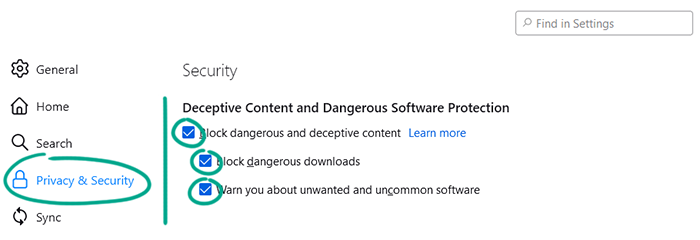
What for: To keep your protection up to date.
By default, Firefox automatically checks for updates and installs these immediately upon availability — even if you are not using the browser. Developers consistently add new features and fix vulnerabilities, so it is important to use the latest version of the app. Make sure you have automatic update installation enabled on your smartphone (and in the background, too).
- Click the button with three parallel lines on it in the top right corner of the screen;
- Select Settings;
- In the General section, scroll down to Firefox Updates;
- Turn on Automatically install updates (recommended) and Use a background service to install updates features.

What for: To revoke unwanted website permissions.
Some websites may ask your browser for permission to access other applications, computer components or information about you. For example, a weather website can show more relevant results if it uses your location info. However, this can also be used by attackers to spy on you through your webcam or to install malicious add-ons. Check the list of permissions and recall undesired ones from suspicious websites:
- Click the button with three parallel lines on it in the top right corner of the screen;
- Select Settings;
- Go to Privacy & Security in the menu on the left;
- Scroll down to Permissions;
- Click the Settings... button next to each permission to see which websites you have granted it to. Remove suspicious websites and Web resources that no longer require the permission;
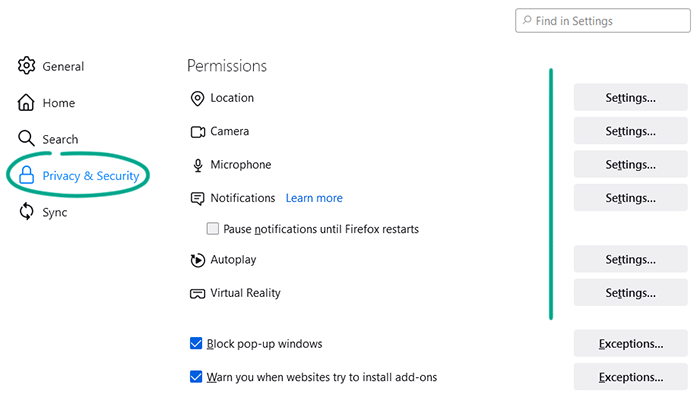
- Check these boxes:
- Block pop-up windows;
- Warn you when websites try to install add-ons.
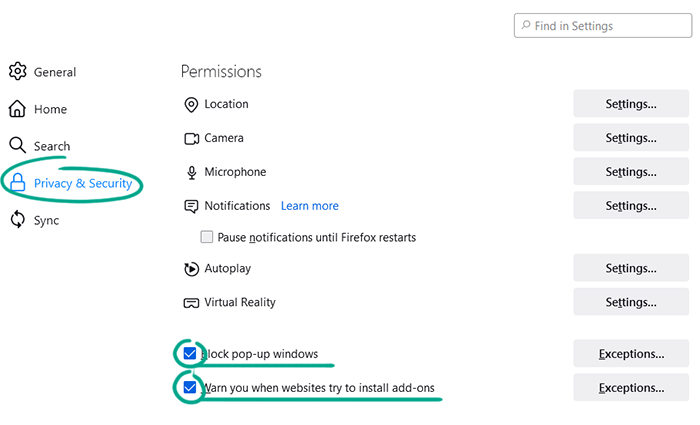
How to hide your data from prying eyes
What for: To leave no tracks.
Firefox normally stores data about the pages you open, the passwords you enter and other browser usage information. If you want to hide that information and when using someone else's device, you can switch to private browsing:
- Click the button with three parallel lines on it in the top right corner of the screen;
- Click New Private Window.

Keep in mind that private browsing only applies to data stored by the browser itself. Your Internet service provider or your employer (in case you are connected to an enterprise network) will be able to see what pages you have visited.
What for: To keep the websites you've visited private.
Firefox can reopen websites from your previous session when it starts. This is a handy feature, but if you are in a public place, strangers may see information that is not intended for them. To avoid this, turn off this feature:
- Click the button with three parallel lines on it in the top right corner of the screen;
- Select Settings;
- In the General section, clear the Restore previous session check box.
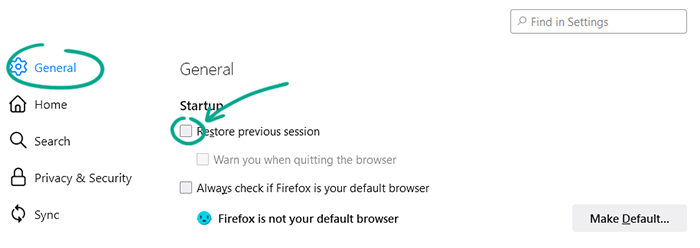
Firefox will now open your home page upon launch.
What for: So that strangers do not see traces of your activity.
By default, the home page displays frequently visited and saved websites, as well as recently opened pages and your latest downloads. If you are in a public space, strangers might see those when you start the browser or open a new tab. To hide them, remove them from the home page:
- Click the button with three parallel lines on it in the top right corner of the screen;
- Select Settings;
- Go to the Home section in the menu on the left;
- Under Firefox Home Content, uncheck the items you want to hide.
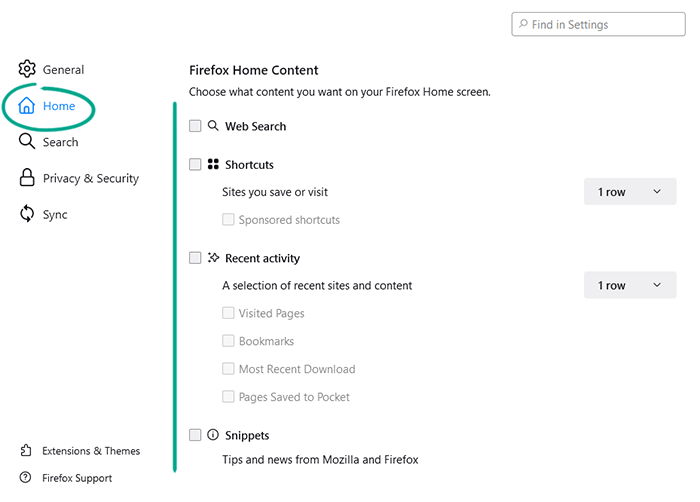
You can also set up your browser to open a blank page when it starts or opens a new tab in the Home section:
- In the Homepage and new windows field, select Blank Page;
- In the New tabs field, select Blank Page.
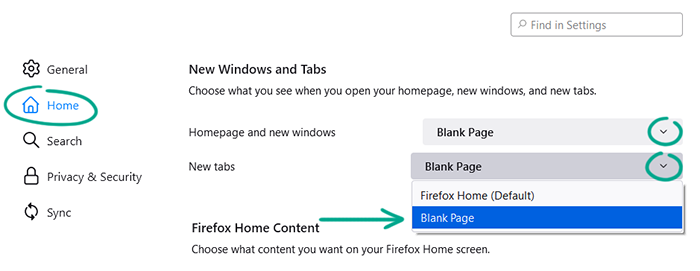
Downside: You will need to reopen all the websites you need to continue with every time you start the browser.
What for: To hide frequently visited websites from strangers.
When you type a request into the address or search bar, Firefox first suggests websites from your bookmarks, open pages, browsing history, and top websites. This helps locate your frequently visited websites faster, but someone near you can see them, too. To hide this information, disable search suggestions:
- Click the button with three parallel lines on it in the top right corner of the screen;
- Select Settings;
- Go to Privacy & Security in the menu on the left;
- Scroll down to Address Bar and uncheck any items that you do not want to appear in searches;
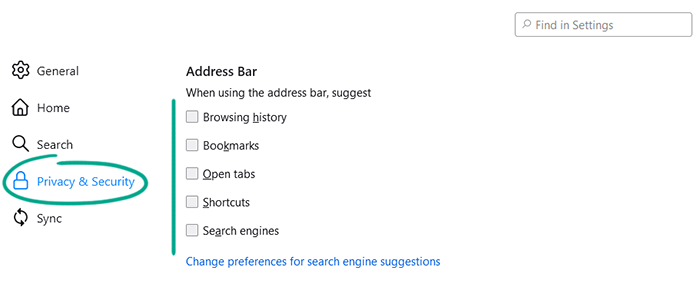
- Click Change preferences for search engine suggestions;

- Clear the Provide search suggestions check box.
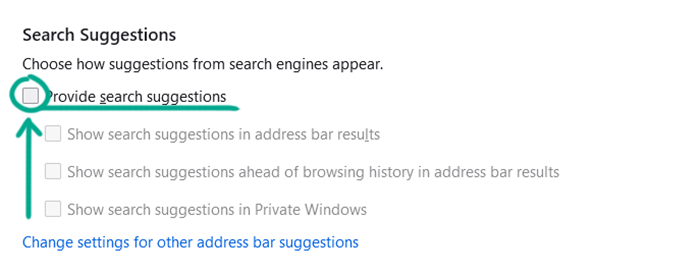
What for: To leave no traces of your activity.
By default, all the pages you visit and all your downloads get logged. This allows you to go back to any page you have viewed or any file you have downloaded. However, if a stranger gains access to your device, they may see your entire browsing history, too. To avoid that, disable logging completely or choose which types of activity the browser will remember.
- Click the button with three parallel lines on it in the top right corner of the screen;
- Select Settings;
- Go to Privacy & Security in the menu on the left;
- Scroll down to History;
- Choose how you want Firefox to handle history:
- Never remember history;
- Use custom settings for history.

Custom settings allow you to configure activity logging rules:
- Always use private browsing mode: if you turn on this feature, the browser won't store history or website settings. You will need to log in to your accounts and enter your details on Web pages every time, but you will be leaving minimal traces;
- Remember browsing and download history: choose whether the browser will store the list of visited pages and downloaded files;
- Remember search and form history: choose if the browser will remember search queries and data entered on websites, such as telephone numbers and addresses;
- Clear history when Firefox closes: if you enable this feature, the browser will clear data about your page visits and downloads once you close it.
Downside: If you forbid the browser to store history, you will need to remember websites or pages that contain valuable information.
How to keep corporations out of your business
What for: To find a balance between privacy and comfort.
Website owners and advertising companies are eager to gather as much information about you as possible. To do this, they use various tracking tools, such as:
- Social media trackers — snippets of code that social networks post on their own and third-party websites. For example, Facebook might embed this type of code in the "share" button on a news portal to find out what websites you visit and track your interests.
- Cookies — small objects containing information about your system and page settings that the website saves on your device.
- Fingerprinters — scripts that record information about your browser and device, such as the screen resolution, system language, installed extensions and other settings.
- Other tracking elements — code snippets embedded in website content, such as banners, buttons, video players and other page elements.
Using the collected data, various companies create a unique profile of your device to remember your website settings and serve up targeted advertising.
Firefox blocks some of these scripts by default and prevents browser-based cryptominers — malicious objects that attackers use to make money at the expense of your device's resources without your permission — from running.
You can turn on a stricter protection mode to further thwart surveillance or customize the protection to meet your needs.
- Click the button with three parallel lines on it in the top right corner of the screen;
- Select Settings;
- Go to Privacy & Security in the menu on the left;
- Under Enhanced Tracking Protection, select the level that suits you:
- Standard. Firefox will block social media trackers, cross-website cookies, fingerprinters and cryptominers on all open pages. It will also block other trackers, but only in private browsing windows.
- Strict. Firefox will block social media trackers, cross-website cookies, fingerprinters, cryptominers and other trackers on all pages.
- Custom. You can define which content the browser will block.

Bear in mind that blocking all cookies and trackers can stop some Web pages from functioning properly. Disable tracking prevention for such Web pages if you are sure they are safe:
- Tap the shield icon to the left of the address bar;
- In the drop-down menu, disable Enhanced Tracking Protection.
What for: To have the browser notify the website owner that you do not want to share information about your activities.
Your browser can notify websites you do not want to be tracked. Website owners do not have to react to it in any way, but many voluntarily stop storing the user's information after receiving this notification. By default, this feature is only enabled in private browsing mode. To use it all the time:
- Click the button with three parallel lines on it in the top right corner of the screen;
- Select Settings;
- Go to Privacy & Security in the menu on the left;
- Search for, or scroll down to, Send websites a "Do Not Track" signal that you don't want to be tracked, and select Always.

What for: To keep website developers from knowing too much about you.
When you visit a website, it can save a small file on your computer to store your activities on the page, device information and operating system details. Such files are called cookies. Websites use them to identify their visitors, remember their settings, and serve up targeted ads. If you want to remain anonymous, set up the browser to automatically clear cookies when you close it:
- Click the button with three parallel lines on it in the top right corner of the screen;
- Select Settings;
- Go to Privacy & Security in the menu on the left;
- Scroll down to Cookies and Site Data and check Delete cookies and site data when Firefox is closed.

You can also erase that data manually:
- Click Manage Data...

- To delete all website data, click Remove All;
- To remove data from some websites only, select the website address in the list and then click Remove Selected.
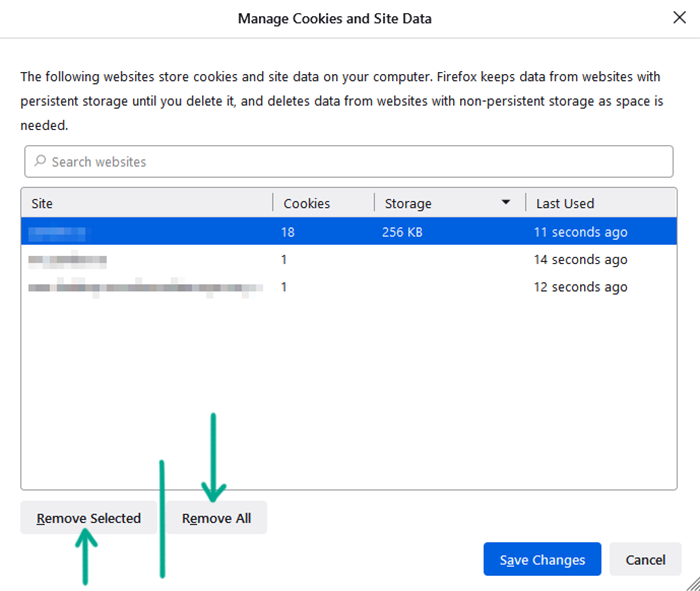
What for: To stop Firefox developers from gathering extra information about you.
Firefox may collect information about the pages you visit, as well as browser technical data and other information. The developers declare they use such data to improve the app and fix bugs. However, it means that data about your browsing will be stored on the company's servers. If you want to avoid it, turn off data collection:
- Click the button with three parallel lines on it in the top right corner of the screen;
- Select Settings;
- Go to Privacy & Security in the menu on the left;
- Scroll down to Firefox Data Collection and Use and clear these boxes:
- Allow Firefox to send technical and interaction data to Mozilla;
- Allow Firefox to make personalized extension recommendations;
- Allow Firefox to install and run studies;
- Allow Firefox to send backlogged crash reports on your behalf.
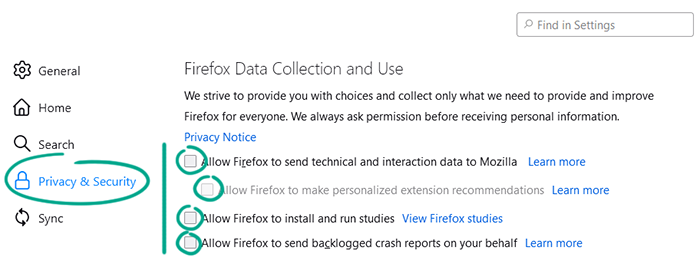
What for: To stop the browser developers from storing your online activity information on their servers.
Firefox can sync your browsing history, passwords, bookmarks and other data between devices where you log in to the browser account. For example, when you bookmark a website on your computer, you'll be able to find it among favorites on your smartphone. To enable this, the browser saves your personal information on the company servers, including your browsing history, the tabs you have open, URLs, and other information. To avoid that, turn off the syncing.
- Click the Firefox Account icon in the top right corner of the screen;
- Select Sync;
- Click Change;
- Click Disconnect... and then Disconnect.
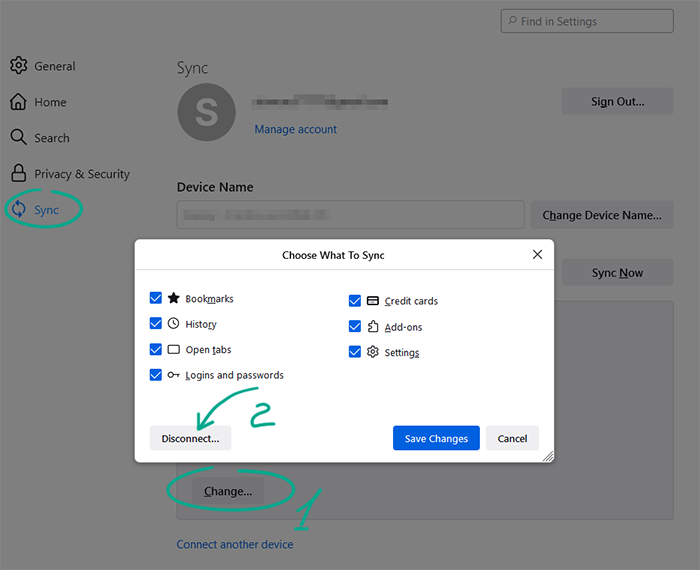
This will stop the browser on the device from syncing information, but you will have to deactivate sync separately on other devices.
Downside: You will only have access to saved passwords, bookmarks and other data from the device where you save them.
What for: To keep search giants from gathering information about you.
Most search engines, such as Google or Bing, store user information and queries. This allows these companies to show customized search results and promote their services. However, some engines — such as DuckDuckGo — do not collect any such data. If you prefer to stay anonymous, you can assign this service as the default search engine.
- Click the button with three parallel lines on it in the top right corner of the screen;
- Select Settings;
- Go to Search;
- Find Default search engine and select DuckDuckGo from the drop-down list.

How to protect your data
What for: To protect against leaks.
When you sign in to a website, Firefox prompts you to save your login and password. This allows it to fill in your login credentials for you next time. By default, the browser regularly checks if any of your accounts have been affected by a leak or hack. To do this, it checks your credentials against a database of compromised accounts. Firefox will warn you if it finds you at the risk of being hacked.
To check your accounts:
- Click the button with three parallel lines on it in the top right corner of the screen;
- Select Settings;
- Go to Privacy & Security;
- Scroll to Logins and Passwords;
- Click Saved Logins;

- In the list on the left, you will see your credentials stored in Firefox. Affected accounts will be marked with a key sign;
- Click the account name and change the weak password to a strong and unique one. To learn more about the leak, click the link in the warning.
You will also see a warning if you visit a website affected by the leak, even if you haven't saved credentials for that website in Firefox.
What for: To keep attackers from using your stored passwords.
When you sign in to a website, Firefox prompts you to save your login and password. Next time you visit the website, the browser will automatically fill in your credentials. However, if someone else gains access to your computer, they can log in to your account.
To protect your accounts, set a primary password. The browser will request it when it opens and every time you access your data.
To set a primary password:
- Click the button with three parallel lines on it in the top right corner of the screen;
- Select Settings;
- Go to Privacy & Security in the menu on the left;
- Scroll down to Logins and Passwords and check Use a Primary Password;

- Set a strong and unique primary password and remember it. If you forget it, you will be able to reset it, but that will remove all data stored in the browser.
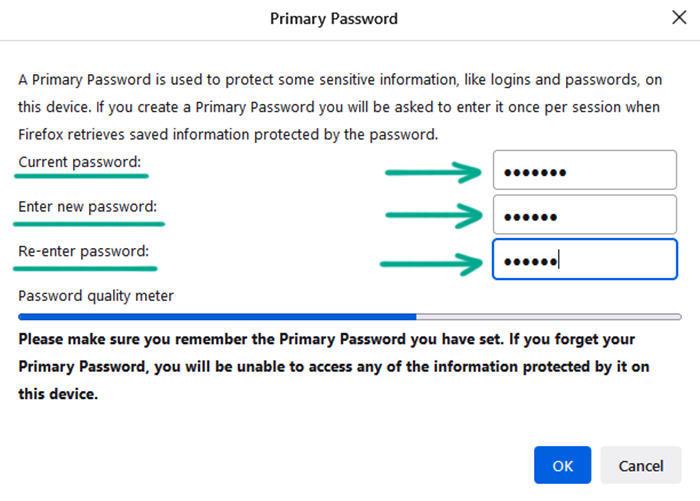
Downside: Every time you start Firefox or view and change stored data, you will need to enter the primary password.
What for: To keep attackers from intercepting your data.
HTTP (hypertext transmission protocol) describes how users and websites exchange data. It is a set of rules that govern the transmission of all information on the Internet, including logins, passwords, and bank card numbers. However, there are several ways to intercept this information, such as a man-in-the-middle attack.
To protect users, many websites use an extended version of HTTP — secure hypertext transmission protocol, or HTTPS. With HTTPS, all data is encrypted. Even if someone intercepts your traffic, they won't be able to learn anything.
However, some websites don't support HTTPS or run both versions in parallel: HTTP and HTTPS. To increase security, you can activate HTTPS-only mode in your browser settings. Thus the browser will only use secure connections.
- Click the button with three parallel lines on it in the top right corner of the screen;
- Select Settings;
- Go to Privacy & Security in the menu on the left;
- Scroll down to the end and select one of these options:
- Enable HTTPS-Only Mode in all windows;
- Enable HTTPS-Only Mode in private windows only.
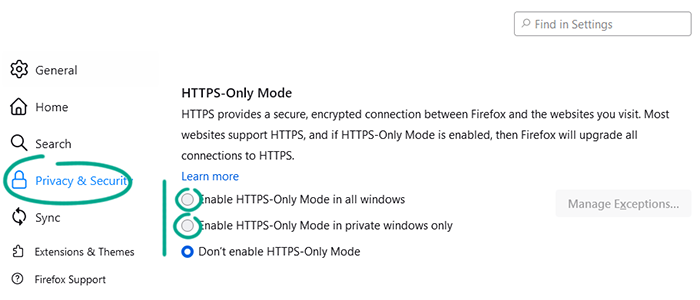
If you open a website that doesn't support HTTPS, you will see a warning about it. You will still be able to browse the page by clicking Continue to HTTP website, but in this case your data will be less secure.
What for: To prevent account hijacking.
When you sign in to a website, Firefox prompts you to save your login and password. Next time you visit the website, the browser will automatically fill in your credentials. However, stored passwords can fall prey to leaks. To be on the safe side, disable autofill and remove stored passwords from the browser:
- Click the button with three parallel lines on it in the top right corner of the screen;
- Select Settings;
- Go to Privacy & Security in the menu on the left;
- Scroll down to Logins and Passwords and clear the Ask to save logins and passwords for websites and Autofill logins and passwords check boxes;
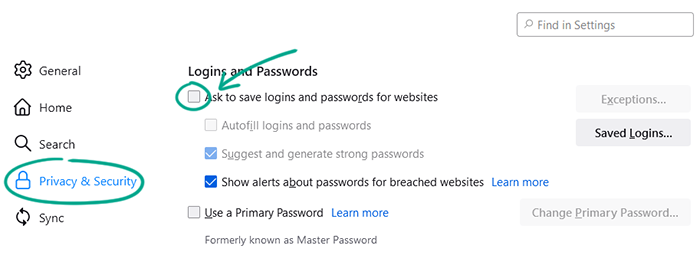
- Click Saved Logins... and remove stored data for all websites.
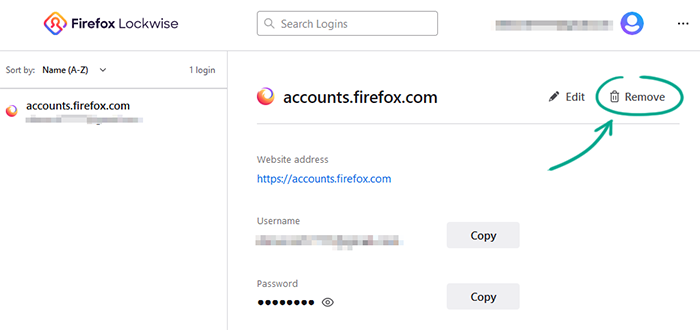
Downside: You will have to manually enter logins and passwords every time you sign in.
You can avoid the inconvenience and improve the security of your accounts using a password manager. Unlike a browser, it does not access third-party resources on the Web, which means it is protected from malicious websites. Moreover, it cannot be hacked through a vulnerable extension or plug-in, while browsers can.
How to feel comfortable online
What for: To save traffic and avoid distractions.
Some websites automatically start playing video or audio when opened. It saves you pressing the start button. However, if you are in a public place or on a limited network, this feature can be a pain. You can turn off automatic playback or mute it in the settings.
- Click the button with three parallel lines on it in the top right corner of the screen;
- Select Settings;
- Go to Privacy & Security in the menu on the left;
- Scroll down to Permissions;
- Click Settings... to the right of the autoplay option;
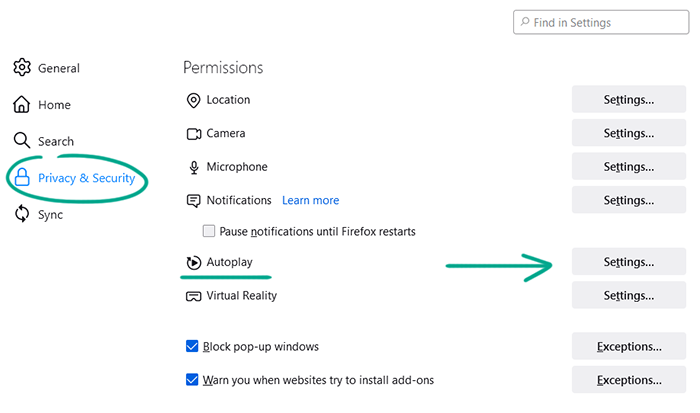
- In the drop-down list next to Default for all websites select how you want the browser to react:
- Allow Audio and Video;
- Block Audio;
- Block Audio and Video;
- Click Save Changes.
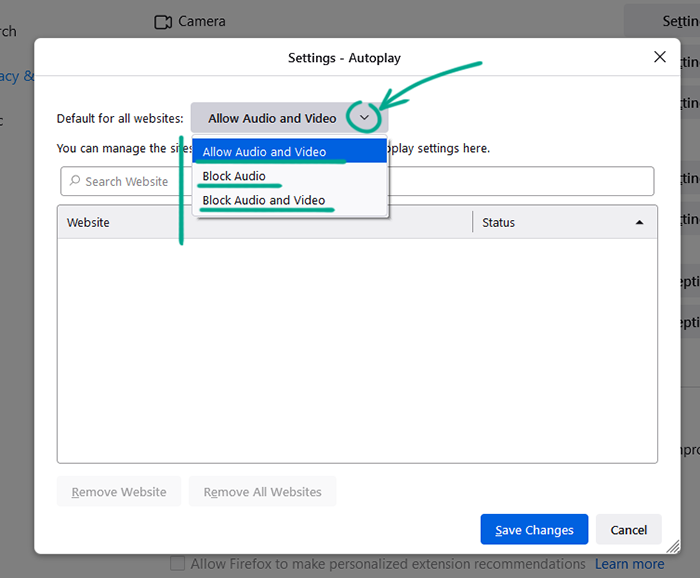
If you've granted the autoplay permission to a particular website, you can revoke it. To do this, find the website in the Settings... menu and change the status of the permission.







